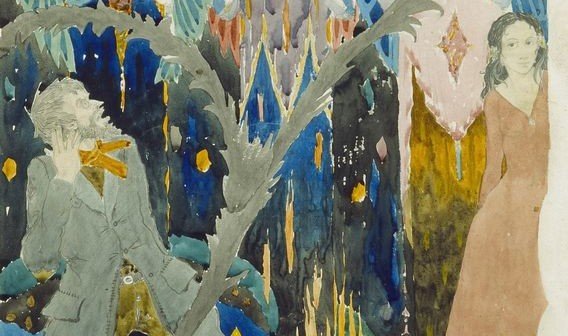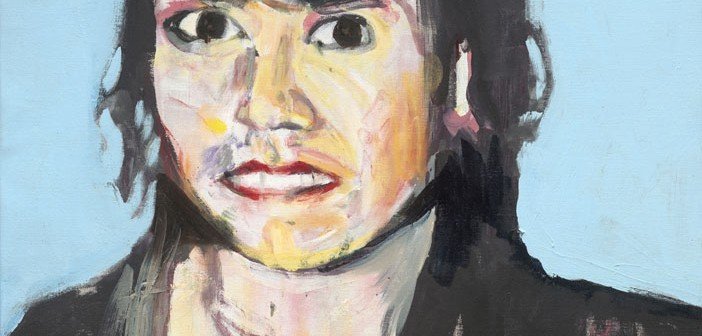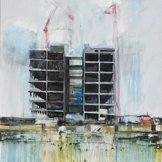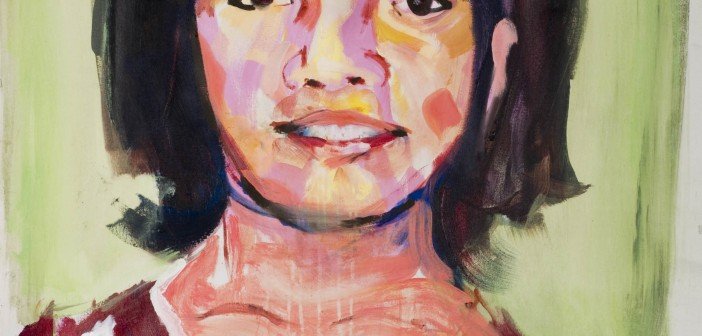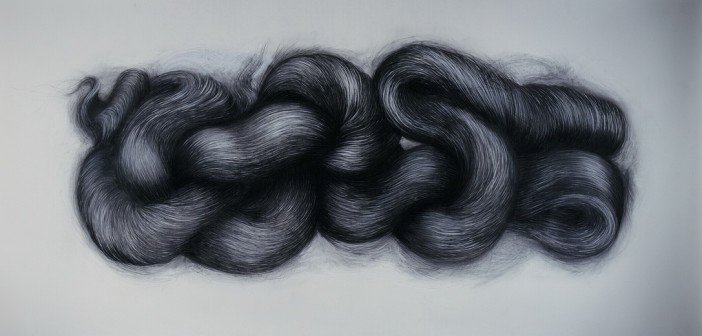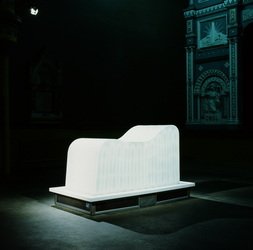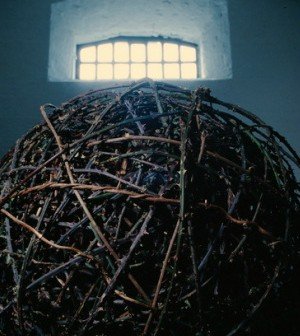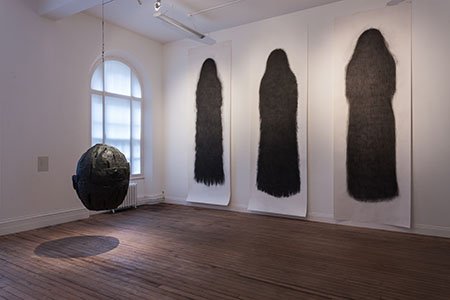Inspirational Irish Artists
Brian O’Doherty (aka Patrick Ireland)
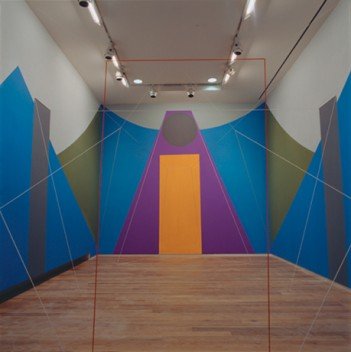
What better way to start this St. Patricks Day list of inspirational Irish artists than with Brian O’Doherty (aka Patrick Ireland). Brian O’Doherty was born in 1928 in Ballaghaderreen, County Roscommon and is an art critic, writer, artist, and academic. He studied medicine in UCD before going to America to pursue studies at Harvard, but quickly became interested in art, working in a variety of media including installation and performance. In New York he became a pioneering figure of Conceptual Art, a movement which rejected the traditional notion of the artwork as a unique object of status and financial worth in favour of forms which depend on the viewer’s mental participation for their existence.
He has lived in New York for more than 50 years working as an artist and art critic and in the meantime he has retained a close connection with Ireland. In 1972, in reaction to the Bloody Sunday killings in Derry, O’Doherty began signing his work under the name ‘Patrick Ireland’, something which caused great consternation with his gallerist. On 20 May 2008, in recognition of the progress for peace in Ireland, O’Doherty ceremoniously buried his alter ego at the Irish Museum of Modern Art in Dublin, and resumed being called by his birth name.
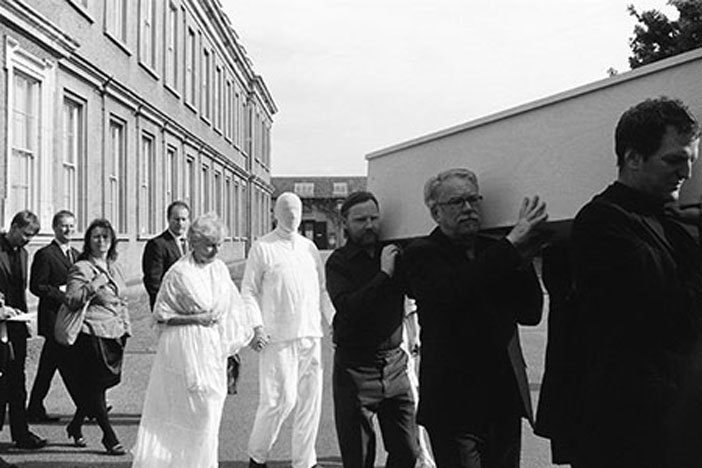
Evie Hone
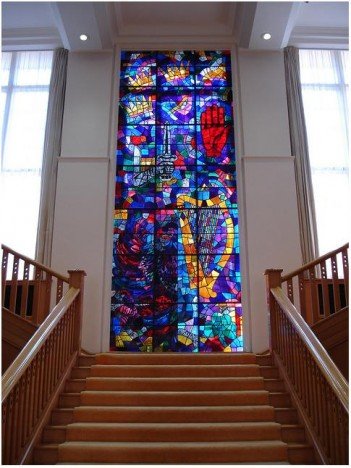
Eva Sydney Hone, usually known as Evie, was a painter and stained glass artist. Born in Dublin in 1894, she came from a line of famous painters that include Nathaniel Hone and Nathaniel Hone the Younger. Evie was struck with polio at the age of eleven and remained disabled for the rest of her life but she did not allow this to interfere with her wish to become an artist. Originally trained as a painter, Evie was thirty-eight before turning to stained glass. She began her artistic career at the Westminster School of Art in London where she was taught by Walter Sickert, and where she met fellow painter Mainie Jellett. In 1921 she travelled to Paris to study with the Cubist painter Andrè Lhote, who taught a modified version of the Cubism developed by Picasso and Braque but soon became aware of further artistic developments and grew tired of Lhote’s teaching. Hone, and her follow student Jellett, particularly admired the work of Albert Gleizes, one of the early Cubists who, after the war, had begun to develop a form of abstract painting and they persuaded an initially reluctant Gleizes to teach them. When both women returned to Ireland they continued to develop their work in different directions, with Evie gravitating towards stained glass. As a very spiritual person, she was interested in revitalising Irish religious art and working in glass was important to her as it gave her a very particular reason to work with religious subject matter. She had a successful career as a stained glass artist and was given major commissions both in Ireland and abroad, including a window for Government buildings in Dublin.
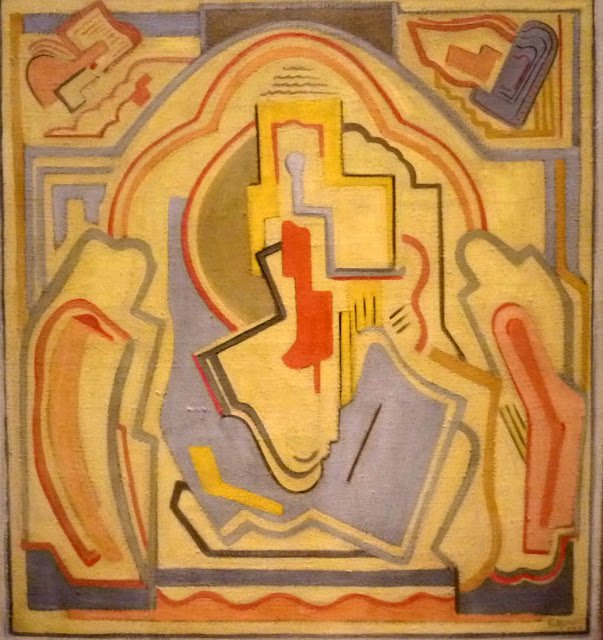
Harry Clarke
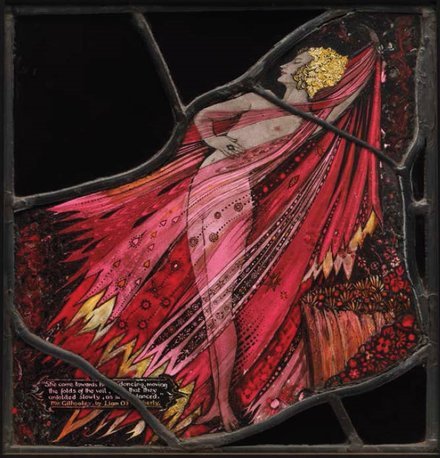
On the theme of stained glass artists, it would be remiss not to mention Harry Clarke, Ireland’s, and possibly the world’s, greatest stained glass artist. He attended Dublin Metropolitan School of Art (now NCAD) and his time there was fruitful. Scholarships enabled him to become a full time student of stained glass and to travel in 1914 to France to see the windows in the great medieval churches there. Clarke quickly established a reputation as an illustrator in the Beardsley tradition, working for Harrap’s in London on such prestigious commissions as the de luxe edition of Edgar Allan Poe’s Tales of Mystery and Imagination and Goethe’s Faust. These, and the books of fairy tales he illustrated, gave Harry Clarke scope for his love of the fantastic, and were warmly praised by critics in Dublin and abroad.
But Clark’s reputation in Ireland depended on his stained glass work. His first big opportunity in this area came in 1915 when he designed and made eleven windows for the newly built chapel of the Honan Hostel at University College Cork. Other church commissions followed but Clarke is best remembered today for The Eve of St. Agnes window, permanently installed at Dublin City Gallery The Hugh Lane and his last big work, the so-called Geneva window, commissioned by the Irish Government in 1927 and intended for the Office of the International Labour Organization in Geneva. These windows gave Clarke an opportunity to display his remarkable technical range, his exquisite colour and his narrative skill.
Dublin City Gallery The Hugh Lane has recently acquired a new window which was a test piece for the Geneva window, the very part of the window that got his masterpiece rejected. The piece depicts a scene from Liam O’Flaherty’s controversial novel Mr Gilhooley in which the semi-naked Nelly seduces Mr Gilhooley, wearing “nothing but a veil” so “her body, as she moved, showed through its folds”.
Clarke had chosen scenes of novels by contemporary Irish writers as his themes for the Geneva Window, an extensive stained glass piece which was commissioned by the Irish Government for the League of Nations building in Geneva. The window includes pieces inspired by the literature of Yeats, Shaw and O’Casey, but Clarke’s choice of the scene from O’Flaherty’s novel was deemed scandalous and unsuitable by Ireland’s President of the Executive Council, WT Cosgrave, and was never used in its intended home in Geneva.
Eva Rothschild
Eva Rothschild is an Irish artist based in London, and has had numerous international solo exhibitions including Narcissus, Galerie Eva Presenhuber, Zurich (2013), Sightings, Nasher Sculpture centre, Dallas (2012/2013), Hot Touch, which travelled to both The Hepworth Wakefield, West Yorkshire (2011), and Kunsteverin Hannover (211/2012) and a self-titled show at The Modern Institute, Glasgow (2008). She was awarded the 2012 Children’s Art Commission at London’s Whitechapel Gallery, and the 2009 Duveens Commission by Tate Britain. In 2011 she was also commissioned to produce new work; Empire for New York’s Public Art Fund and showed work last year at the controversial Sydney Biennale.
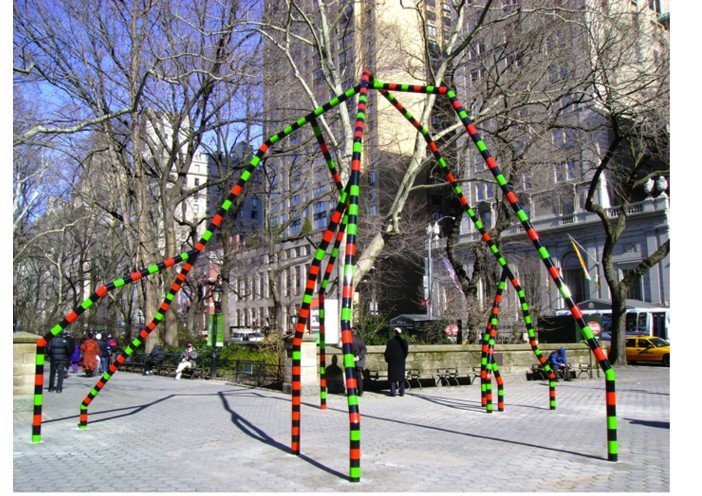
Rothschild uses materials such as Plexiglas, leather and paper in her sculptural pieces working with both industrial and hand made techniques. She also makes wall-based works and more recently, video pieces. She is part of a younger generation of artists that have been acknowledged as having a renewed preoccupation with the three-dimensional object and her work references the art movements of the 1960s and 1970s, such as Minimalism, using this relationship to renegotiate and expand on familiar artistic materials and ways of working. She is also influenced by psychedelia, spirituality, and elementary forms; circles, spheres, squares and triangles reoccur throughout her work. Her work embodies many tensions, hard-edged geometry, combined with references to 60s counter culture as well as devotional imagery such as totems and mandalas, all the while juxtaposing industrial and natural materials.
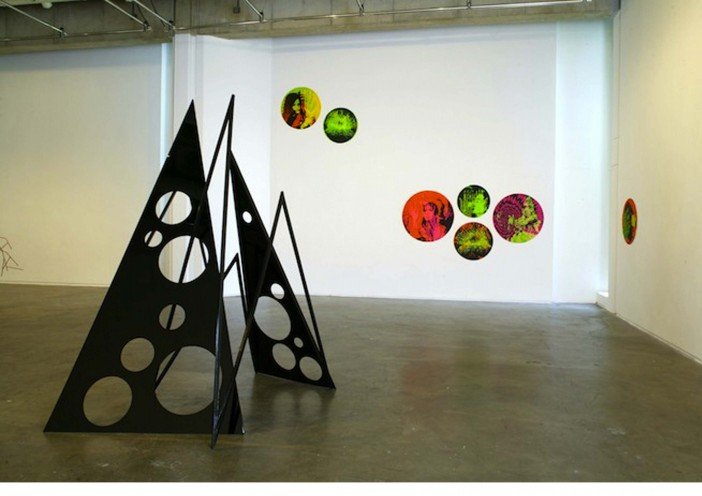
Brian Maguire
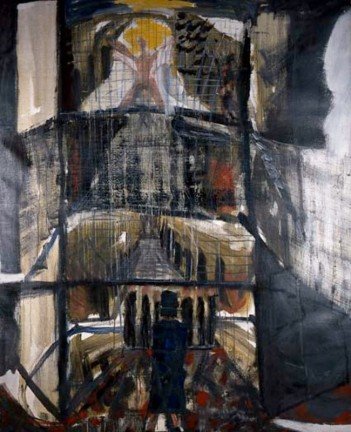
Maguire was born in Dublin in 1951 and attended the National College of Art and Design, which he disliked. His philosophy as an artist is inextricably linked to his political beliefs. Maguire, for many years, has taught art in Irish prisons, attempting to recognise and foster talent among men and women despised by respectable society. Since 1987 he has served as artist-in-residence in jails in Limerick, Portlaoise, Dublin, Spike Island in Cork, and Masqui Prison in Vancouver.(via Crawford Art Gallery)
A fiercely expressive painter, Brian Maguire’s work essentially emerges from social and political situations and approaches painting as a gesture of solidarity. He operates a truly engaged practice, compelled by the raw realities of humanity’s violence against itself, and the potential for justice.
Since 2009 Brian Maguire has travelled on a number of occasions to Ciudad Juárez in Mexico. Described as the most violent city on earth, this is a place where the most heinous of crimes are often met with impunity. On a journey to uncover and bring to international attention the endemic injustices and cyclical nature of the violence that occurs in this place, Maguire has involved and collaborated with a number of artists, journalists and human rights activists. Addressing the phenomenon of femicide – the killing of women ostensibly due to their gender – by working with the families and women affected, and by becoming ‘embedded’ with crime reporters on the city’s newspaper El Norte, he developed a series of portraits.
The Portraits are of young women who have been violently murdered. Painted from images given by each woman’s family, for each portrait that brought back to Ireland to be exhibited, a further portrait sits in the home of her family in Mexico. The title of each painting tells the story of each woman, and in some cases, child.
Alice Maher
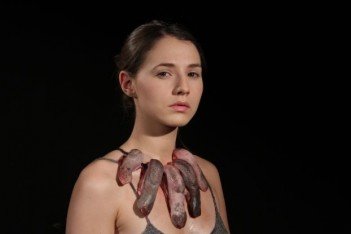
Born in Tipperary in 1956 Alice Maher uses a wide variety of media including animation, sculpture, photography and installation in her work. In 2012 she had a major retrospective of her work, Becoming, at the Irish Museum of Modern Art, Earlsfort Terrace which gathered together many of her significant works,
The title Becoming, hints at some of the main preoccupations of the artist and the themes that will be explored in the exhibition. A dress can be becoming or flattering; one’s behaviour can become you, as you act in an appropriate way within a social construct; but becoming also points at a point of transformation where something becomes something else, Maher’s work has always placed itself at this nexus, a point of metamorphosis where there is continuous flux as states shift and the familiar becomes otherworldly or unknown(via IMMA)
Many of her works use natural objects and materials from lamb’s tongues, to nettles, snails and hair, which features prominently in large-scale drawings. For the 1991 group exhibit In A State: An Exhibition in Kilmainham Gaol on National Identity, Maher created Cell, a site-specific installation made from brambles. Assembled jointly from brambles collected outside Kilmainham Gaol and Maher’s childhood home in Tipperary, Cell structurally integrates personal memory and public history, The installation claims the solitary prison cell not only as a site of political struggle and surveillance, but also as a historically aesthetic and discursive space. Intentionally conceived on a scale too large to be contained within the walls of the prison cell, the 6? × 6? × 6? ball of brambles reminds us of a prisoner in solitary confinement pushing against their boundaries. The only contribution to In A State still on display in its original cell in Kilmainham’s East Wing, in the intervening years, Cell has noticeably diminished in size, its brambles decomposing and “going to dust slowly” with the passage of time.
Mnemosyne (2002) draws on themes of mythology and folklore as well as memory. This installation piece is constructed from a refrigeration unit, which condenses the moisture in the air to create a glistening, icy sculptured piece. The piece is in the shape of a lounge chair or a wave, but despite its icy exterior, is not cold to touch. Mnemosyne was the Goddess of memory and the mother of the nine Muses, and thus the glistening sculpture becomes a metaphor for the crystallization of inspiration into being, as fragile and delicately balanced as the process may be.

